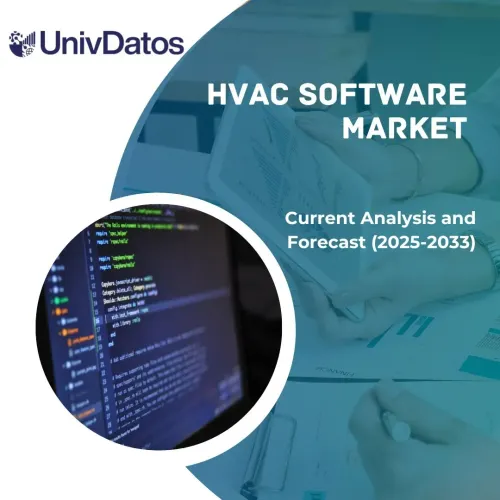スポーツ分析市場:現状分析と予測(2024年~2032年)
コンポーネント(ソリューションとサービス)の重視、スポーツ(フットボール、クリケット、野球、ラグビーなど)、展開モード(クラウドおよびオンプレミス)、アプリケーション(チームパフォーマンス分析、ビデオ分析、健康評価など)、および地域/国
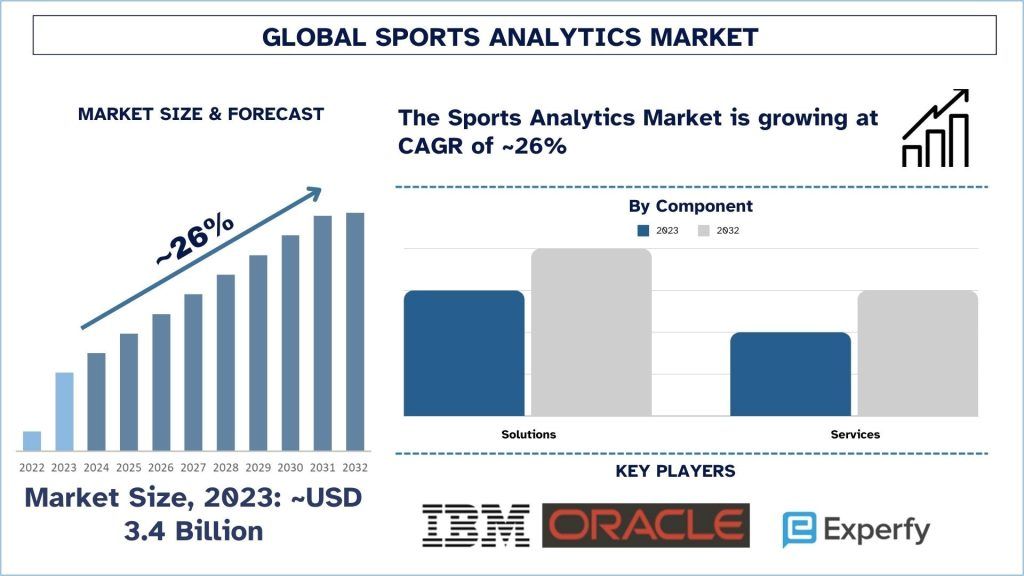
世界のスポーツ分析市場規模と予測
世界のスポーツ分析市場は、2023年に約34億米ドルと評価され、データ収集、処理、分析技術の継続的な改善により、予測期間(2024年~2032年)中に約26%のCAGRで成長すると予想されています。
世界のスポーツ分析市場分析
世界のスポーツ分析市場は、データ分析、人工知能(AI)、機械学習(ML)を活用して、スポーツ選手、スポーツ愛好家、スポーツビジネスにおける組織活動に関するデータを収集、分析、理解する成長産業です。この市場は、パフォーマンス分析、怪我の予防、ゲーム戦略の策定、さらにはファンエンゲージメントを網羅しています。この市場の成長を促進する具体的な要因は、プロスポーツチームや組織におけるビッグデータおよび高度な分析ツールの利用の増加、およびスポーツリーグにおけるデータ志向のアプローチとファン層のパーソナライゼーションの拡大です。また、ウェアラブル技術、コネクテッドデバイス、リアルタイムデータ分析の利用により、スポーツ分析市場は成長を続け、現代スポーツの発展における重要な要素となっています。
世界のスポーツ分析市場の動向
本項では、当社の調査専門家チームが特定した、世界のスポーツ分析市場のさまざまなセグメントに影響を与えている主要な市場動向について解説します。
オンプレミスセグメントが業界を変革
オンプレミスセグメントは、組織にデータと分析のより多くの制御、より優れたセキュリティ、およびより高いカスタマイズの可能性を与えるため、スポーツ分析市場で最大の市場シェアを保持しています。この展開モデルは、機密データを管理し、規制遵守のプレッシャーを受けている大規模なスポーツ組織およびスポーツチームに適していることに注意することが重要です。オンプレミス展開はまた、最小限の遅延で効率的なリアルタイム分析を行うために、選択されたツールをクライアントの現在のIT環境に組み込むことができるという利点も提供します。一方、オンプレミス展開は、独自のデータを処理するための安全な環境に対する組織のニーズに対応し、戦略を改善し、スポーツ市場で競争力を獲得するために必要なカスタマイズされた高性能分析ソリューションを提供します。
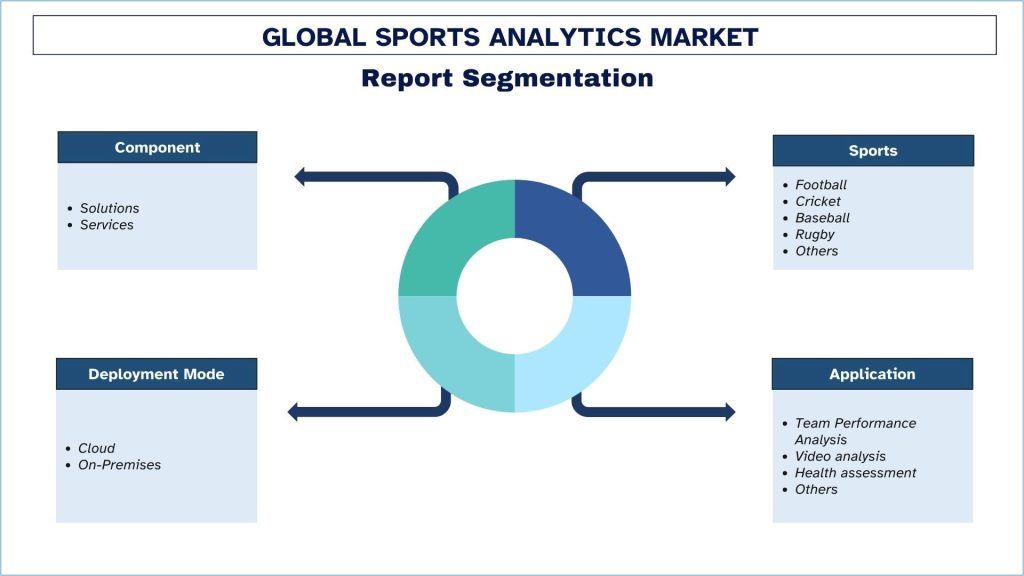
アジア太平洋地域は、予測期間中に最も速いCAGRで成長すると予想されています。
アジア太平洋地域のスポーツ分析市場は現在、より多くの組織がスポーツテクノロジーにリソースを投資し、地域がデータ主導の意思決定に移行するにつれて、成長市場となっています。これは、消費者間でのスポーツ消費の増加、分析技術の発展、および結果を改善するためにデータを活用するプロスポーツリーグおよびチームの増加によるものです。これらの推進要因の一部は、高度なデータ分析ツールと組み合わせたウェアラブルデバイスの使用の急増、人工知能の組み込み、および機械学習アルゴリズムです。アジア太平洋地域にあるスポーツ組織とフランチャイズは、競争で優位に立とうとしており、スポーツ分析のための包括的なソリューションの市場が急速に拡大するにつれて、大規模な成長のチャンスは比類のないものになっています。
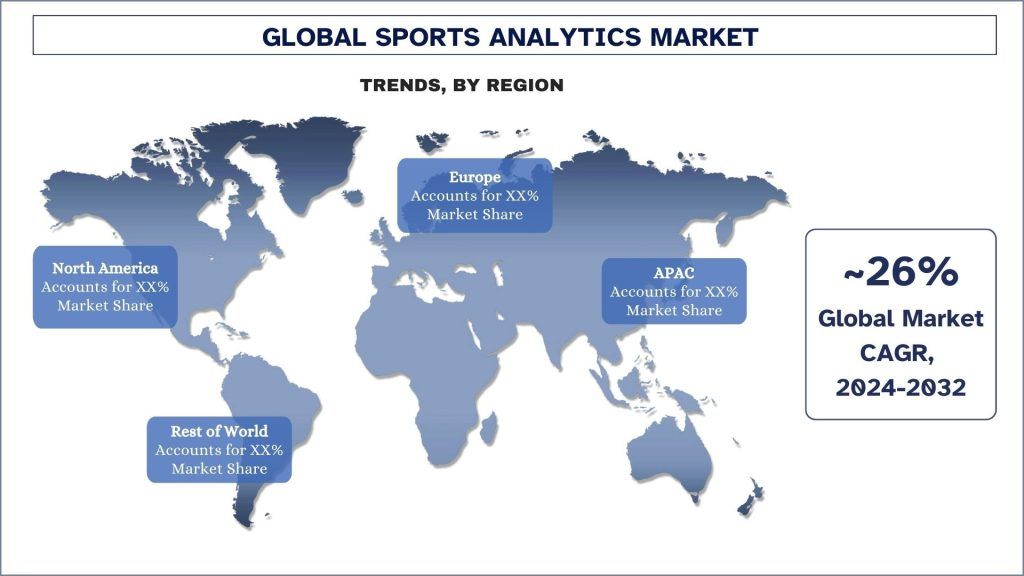
世界のスポーツ分析業界の概要
世界のスポーツ分析市場は競争が激しく、グローバルおよび国際的な市場プレーヤーが多数存在します。主要なプレーヤーは、パートナーシップ、契約、コラボレーション、新製品の発売、地理的拡大、合併、買収など、市場での存在感を高めるためにさまざまな成長戦略を採用しています。市場で活動している主なプレーヤーには、IBM、SAP、SAS Institute Inc.、Stats Perform、TruMedia、Oracle、Salesforce, Inc.、Experfy Inc.、Catapult Group International Ltd、Sportradar AGなどがあります。
世界のスポーツ分析市場レポートのカバレッジ
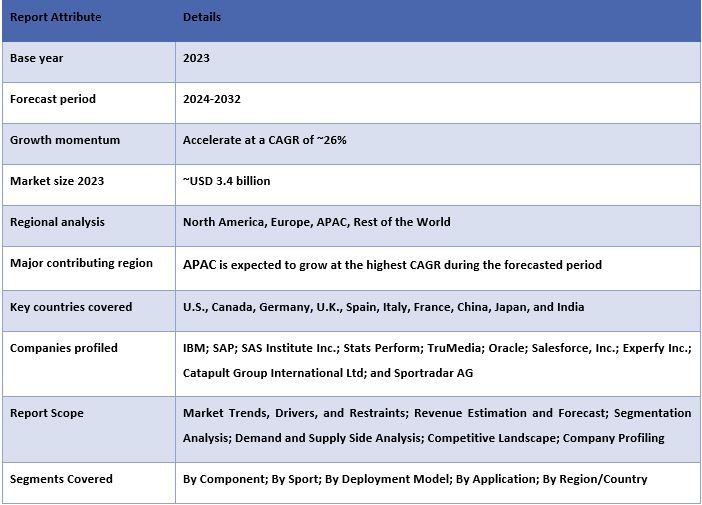
本レポートを購入する理由:
- この調査には、認証された主要な業界専門家によって検証された市場規模と予測分析が含まれています。
- レポートは、業界全体のパフォーマンスを簡単に概説します。
- レポートは、主要なビジネス財務、タイプポートフォリオ、拡張戦略、および最近の開発に重点を置いて、著名な業界ピアの詳細な分析を網羅しています。
- 業界に存在する推進要因、制約、主要なトレンド、および機会の詳細な調査。
- この調査は、さまざまなセグメントにわたる市場を包括的に網羅しています。
- 業界の地域レベル分析の詳細な調査。
カスタマイズオプション:
世界のスポーツ分析市場は、要件またはその他の市場セグメントに応じて、さらにカスタマイズできます。これに加えて、UMIは、お客様が独自のビジネスニーズを持っている可能性があることを理解しているため、お客様の要件に完全に適合するレポートを入手するために、お気軽にお問い合わせください。
目次
世界のスポーツ分析市場分析(2024年~2032年)の調査方法
世界のスポーツ分析市場の過去の市場を分析し、現在の市場を推定し、将来の市場を予測することは、主要地域における世界のスポーツ分析の採用を創出し分析するために行われた3つの主要なステップでした。過去の市場数値を収集し、現在の市場規模を推定するために、徹底的な二次調査が実施されました。次に、これらの洞察を検証するために、多数の調査結果と仮定が考慮されました。さらに、世界のスポーツ分析市場のバリューチェーン全体にわたる業界の専門家との徹底的な主要インタビューが実施されました。主要インタビューを通じて市場数値を仮定し検証するために、完全な市場規模を予測するためにトップダウン/ボトムアップアプローチを採用しました。その後、業界に属するセグメントおよびサブセグメントの市場規模を推定および分析するために、市場の内訳およびデータ三角測量法が採用されました。詳細な方法論について以下に説明します。
過去の市場規模の分析
ステップ1:二次ソースの詳細な調査:
世界のスポーツ分析市場の過去の市場規模を取得するために、年次報告書および財務諸表、業績プレゼンテーション、プレスリリースなどの企業内部ソース、およびジャーナル、ニュースおよび記事、政府刊行物、競合他社の刊行物、セクターレポート、サードパーティデータベース、その他の信頼できる刊行物などの外部ソースを通じて、詳細な二次調査が実施されました。
ステップ2:市場セグメンテーション:
世界のスポーツ分析市場の過去の市場規模を取得した後、主要地域におけるさまざまなセグメントおよびサブセグメントの過去の市場の洞察とシェアを収集するために、詳細な二次分析を実施しました。主要なセグメントは、コンポーネント、スポーツ、展開モード、アプリケーション、および地域としてレポートに含まれています。さらに、その地域におけるテストモデルの全体的な採用を評価するために、国レベルの分析が実施されました。
ステップ3:要因分析:
さまざまなセグメントおよびサブセグメントの過去の市場規模を取得した後、世界のスポーツ分析市場の現在の市場規模を推定するために、詳細な要因分析を実施しました。さらに、コンポーネント、スポーツ、展開モード、アプリケーション、および世界のスポーツ分析市場地域などの従属変数と独立変数を使用して要因分析を実施しました。世界のスポーツ分析市場におけるトップパートナーシップ、合併と買収、事業拡大、および製品の発売を考慮して、需要と供給側のシナリオの徹底的な分析が実施されました。
現在の市場規模の推定と予測
現在の市場規模の算定:上記の3つのステップからの実行可能な洞察に基づいて、現在の市場規模、世界のスポーツ分析市場の主要なプレーヤー、およびセグメントの市場シェアに到達しました。必要な割合シェア分割と市場の内訳はすべて、上記の二次的アプローチを使用して決定され、主要インタビューを通じて検証されました。
推定と予測:市場の推定と予測のために、推進要因とトレンド、制約、および利害関係者が利用できる機会を含むいくつかの要因に重みが割り当てられました。これらの要因を分析した後、関連する予測手法(すなわち、トップダウン/ボトムアップアプローチ)を適用して、世界の主要市場全体のさまざまなセグメントおよびサブセグメントの2032年の市場予測に到達しました。市場規模の推定に採用された調査方法論は次のとおりです。
- 収益(米ドル)に関する業界の市場規模、および国内の主要市場全体における世界のスポーツ分析市場の採用率
- 市場セグメントおよびサブセグメントのすべての割合シェア、分割、および内訳
- 提供されるタイプに関する世界のスポーツ分析市場の主要なプレーヤー。また、急速に成長する市場で競争するためにこれらのプレーヤーが採用する成長戦略
市場規模とシェアの検証
主要調査:主要地域全体のトップレベルのエグゼクティブ(CXO/VP、営業責任者、マーケティング責任者、運用責任者、地域責任者、国責任者など)を含むキーオピニオンリーダー(KOL)との詳細なインタビューが実施されました。次に、主要調査の結果が要約され、統計分析が実行されて、述べられた仮説が証明されました。主要調査からのインプットは二次的な調査結果と統合され、情報が実用的な洞察に変わりました。
さまざまな地域における主要な参加者の分割
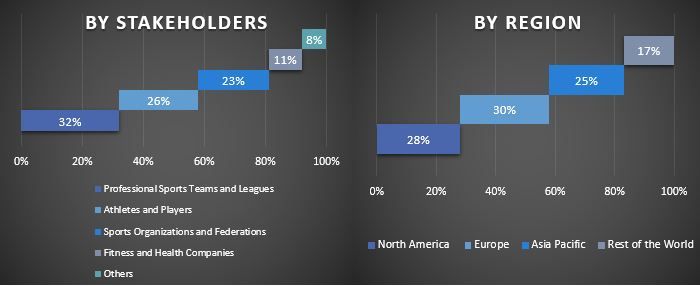
市場エンジニアリング
データ三角測量法を採用して、市場全体の推定を完了し、世界のスポーツ分析市場の各セグメントおよびサブセグメントの正確な統計数値に到達しました。グローバルスポーツ分析市場のコンポーネント、スポーツ、展開モード、アプリケーション、および地域におけるさまざまなパラメーターとトレンドを調査した後、データはいくつかのセグメントとサブセグメントに分割されました。
世界のスポーツ分析市場調査の主な目的
世界のスポーツ分析市場の現在および将来の市場動向が調査で特定されました。投資家は、調査で実施された定性的および定量的分析に基づいて、投資の裁量を行うための戦略的洞察を得ることができます。現在および将来の市場動向は、地域レベルでの市場全体の魅力を決定し、産業参加者が未開発の市場を活用して、ファーストムーバーの利点から利益を得るためのプラットフォームを提供しました。調査のその他の定量的な目標は次のとおりです。
- 価値(米ドル)の観点から、世界のスポーツ分析市場の現在および予測市場規模を分析します。また、さまざまなセグメントおよびサブセグメントの現在および予測市場規模を分析します。
- 調査のセグメントには、コンポーネント、スポーツ、展開モード、アプリケーション、および地域の領域が含まれます。
- 業界の規制の枠組みを定義および分析します。
- さまざまな仲介業者の存在に関連するバリューチェーンを分析するとともに、業界の顧客および競合他社の行動を分析します。
- 主要地域における世界のスポーツ分析市場の現在および予測市場規模を分析します。
- レポートで調査された地域の主要国には、アジア太平洋、ヨーロッパ、北米、および世界のその他の地域が含まれます
- 世界のスポーツ分析市場の企業プロファイルと、プレーヤーが急速に成長する市場で持続するために採用する成長戦略。
- 業界の詳細な地域レベルの分析
よくある質問 よくある質問
Q1:世界のスポーツ分析市場の現在の市場規模と成長の可能性は?
Q2:世界のスポーツ分析市場の成長を牽引する要因は何ですか?
Q3: コンポーネントカテゴリ別で、世界のスポーツ分析市場において最大のシェアを占めるセグメントはどれですか?
Q4: グローバルスポーツ分析市場における新たなテクノロジーとトレンドは何ですか?
Q5:世界のスポーツ分析市場を支配するのはどの地域ですか?
関連 レポート
この商品を購入したお客様はこれも購入しました




